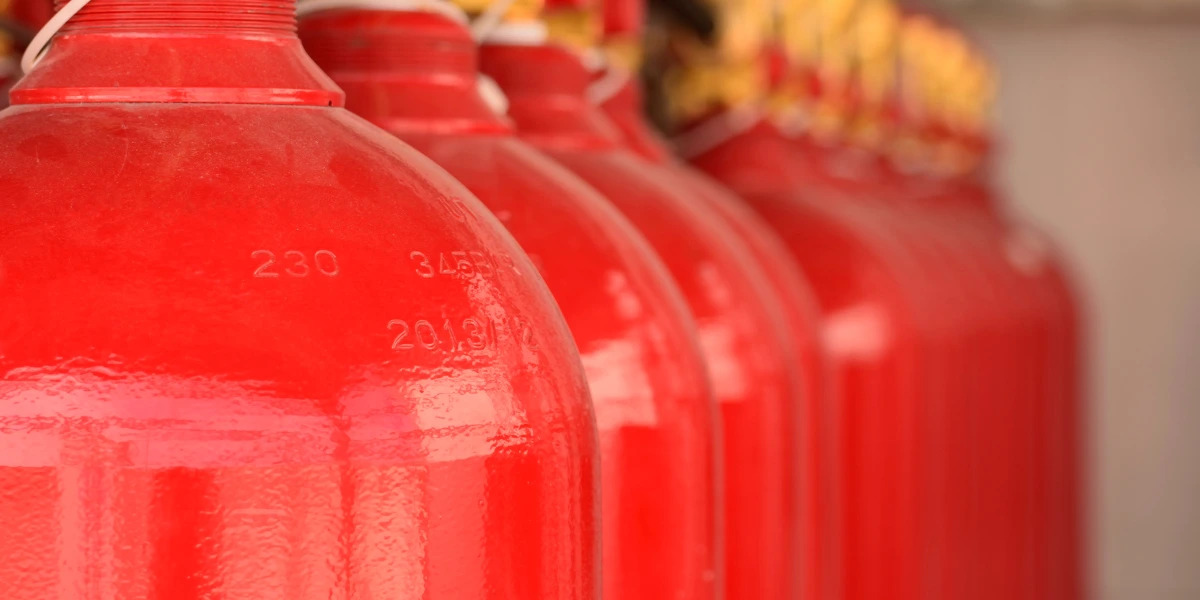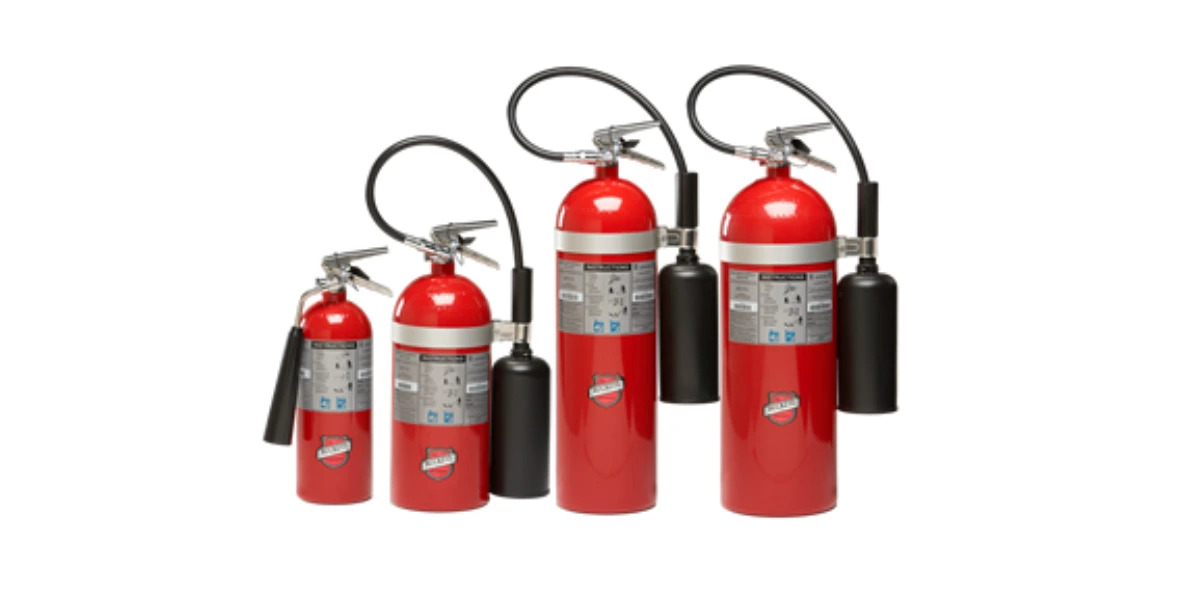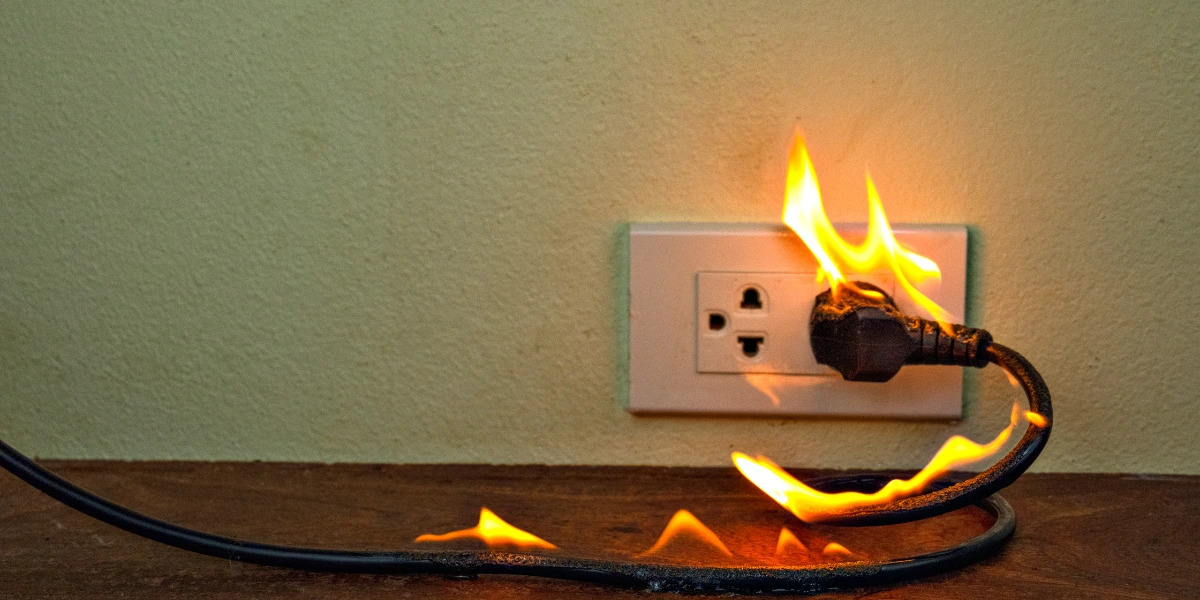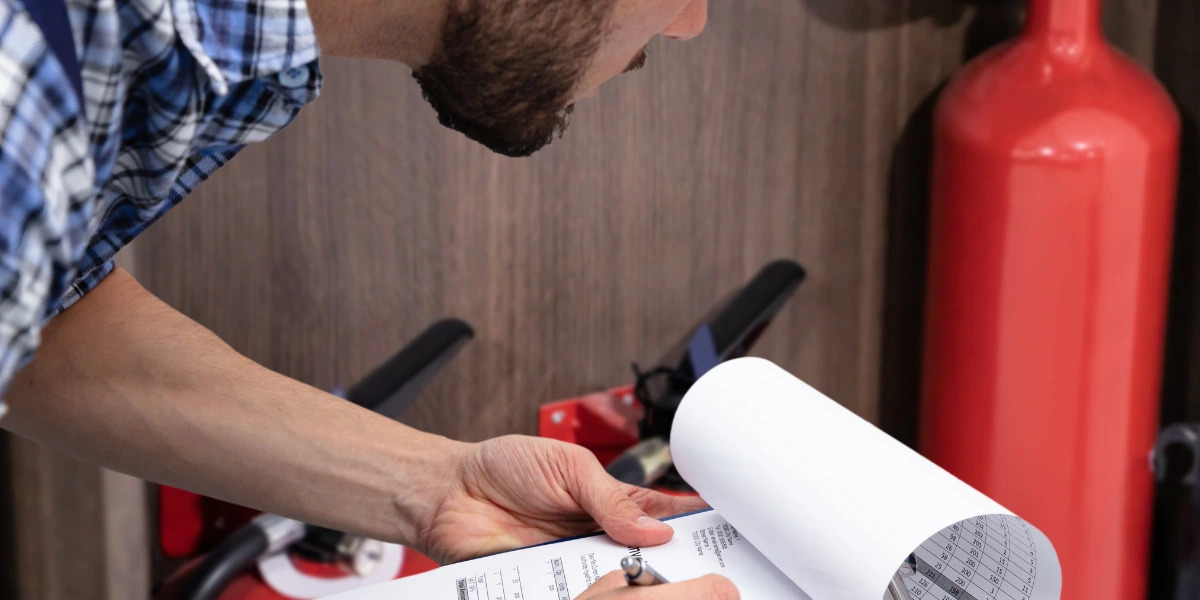What Is a CO2 Fire Extinguisher? | State College, PA
Ever wondered how a CO2 fire extinguisher fits into the big picture of fire safety? These fire extinguishers are a go-to choice for certain fire scenarios, especially where precision and safety are key.
With carbon dioxide as their main ingredient, CO2 fire extinguishers (also known as carbon dioxide fire extinguishers) tackle fires uniquely, making them a vital tool in specific environments.
Key Takeaways
- CO2 fire extinguishers are tailored for Class B and Class C fires and are particularly effective in electrical fires and flammable liquid scenarios.
- Their non-conductive, residue-free nature and distinctive design features make them safe and effective for specialized fire situations.
- Regular inspection and hydrostatic testing are essential for ensuring the reliability and safety of CO2 extinguishers.
What Are Carbon Dioxide Fire Extinguishers?

CO2 fire extinguishers are specifically designed for Class B fires—those involving flammable liquids like oil and gasoline—and electrical fires. The main ingredient is carbon dioxide, hence the name.
How it works
This type of extinguisher uses carbon dioxide to smother fires by displacing oxygen around the fire to effectively extinguish it. It is often used for fires in electrical equipment and flammable liquids, as CO2 is a non-conductive and clean agent.
Key features
Carbon dioxide extinguishers are identifiable by their lack of a pressure gauge and typically have a horn-like nozzle. They can range in size but are often equipped with a frost-free horn to prevent cold burns during use. They do not leave any residue, which makes them ideal for environments with expensive electronic equipment.
Effectiveness
Carbon dioxide fire extinguishers are highly effective in quickly putting out fires involving electrical equipment and flammable liquids like solvents, paints, and petrol. However, they are not suitable for Class A fires (ordinary combustibles) or Class K fires (cooking oils). Their discharge range is limited, and they work best in confined spaces where the gas can effectively smother the fire.
These extinguishers are essential in settings where electrical fires are a risk or where using a water-based extinguisher could cause damage, such as in IT server rooms, laboratories, and mechanic shops because of their clean, residue-free discharge.
Design and Features of CO2 Fire Extinguishers

CO2 fire extinguishers are designed to handle the intense pressure of carbon dioxide, a key component in their fire-fighting arsenal. They have a distinctive hard horn or nozzle, which aids in directing the CO2 stream precisely at the fire. The lack of a pressure gauge is a unique design element, emphasizing the need for regular professional maintenance.
They come in various sizes to cater to different needs:
- Small units: Typically weighing 5 to 10 pounds, these are ideal for quick grab-and-go situations, such as in offices or residential areas.
- Large units: Heavier models, often exceeding 20 pounds, are suited for industrial environments where larger fire risks are present.
Advantages and Limitations of CO2 Fire Extinguishers

The advantages of CO2 fire extinguishers lie in their specific applications and safety features:
- Electrical safety: Their non-conductive nature makes them safe for extinguishing electrical fires without risking electrocution.
- Residue-free: CO2 extinguishers leave no residue, making them ideal for environments with sensitive electronic equipment.
However, there are limitations and safety considerations:
- Limited fire types: Primarily effective against Class B (flammable liquids) and Class C (electrical) fires, they are not suitable for Class A fires (ordinary combustibles) or Class K fires (cooking oils).
- Handling precautions: The discharge from CO2 extinguishers is extremely cold, which can pose a risk of frostbite. Proper handling and safety measures are necessary.
- Discharge range: Their effective range is shorter compared to other types of extinguishers, requiring closer proximity to the fire.
- Confined space use: In confined spaces, there's a risk of asphyxiation due to oxygen displacement by CO2.
Overall, CO2 fire extinguishers are highly effective for specific fire scenarios but require knowledgeable and cautious use.
Maintenance and Inspection of CO2 Fire Extinguishers

Regular maintenance and inspection are crucial for CO2 fire extinguishers to ensure they function effectively and safely:
- Visual checks: Regularly inspect for any signs of damage or corrosion, especially around the horn and cylinder.
- Weight and pressure: Even though carbon dioxide extinguishers lack a pressure gauge, weighing them periodically helps in ensuring the correct amount of CO2 is present.
- Hydrostatic testing: It's mandatory to conduct hydrostatic testing every five years. This test checks the integrity of the extinguisher's cylinder and its ability to withstand high pressures.
- Professional inspection: Annual servicing by a qualified technician is recommended to ensure all parts are functioning correctly and the extinguisher is ready for use.
Fun fact- The continuity test makes sure there is no defect or obstruction in the hose. This is important because when you discharge a CO2 cylinder, it creates static electricity, which will give the user a nice little jolt if there is a defect in the hose.
Protecting Properties for Over 35 Years, Let Us Protect Yours Too
Looking for peace of mind in fire safety? Choose Swartz, where cutting-edge CO2 fire extinguishers meet your specific needs. Don't let electrical fires or flammable liquids put your space at risk.
We provide extinguishers that deliver precision, effectiveness, and ease of use. Our range of CO2 extinguishers, known for their reliability in energized environments, are perfect for safeguarding your valuable equipment and spaces.
Invest in top-tier fire safety. Contact Swartz now and discover the ideal CO2 fire extinguisher solution for your unique needs. Don't wait until it's too late!
Frequently Asked Questions
What is a CO2 fire extinguisher used for?
A carbon dioxide fire extinguisher is used for Class B and C fires because it is particularly effective in extinguishing electrical fires and fires involving flammable liquids.
What is the color of a CO2 extinguisher?
A carbon dioxide extinguisher will typically be identified by a black label or band.
What are the 4 common types of fire extinguishers used for?
The four main types are water (for solids), foam (for liquids), dry powder or ABC extinguisher (for mixed fire types), and CO2 (for electrical and flammable liquid).
What is a CO2 fire extinguisher for gas?
CO2 extinguishers are particularly effective against fires involving flammable gases within their Class B fire rating.


